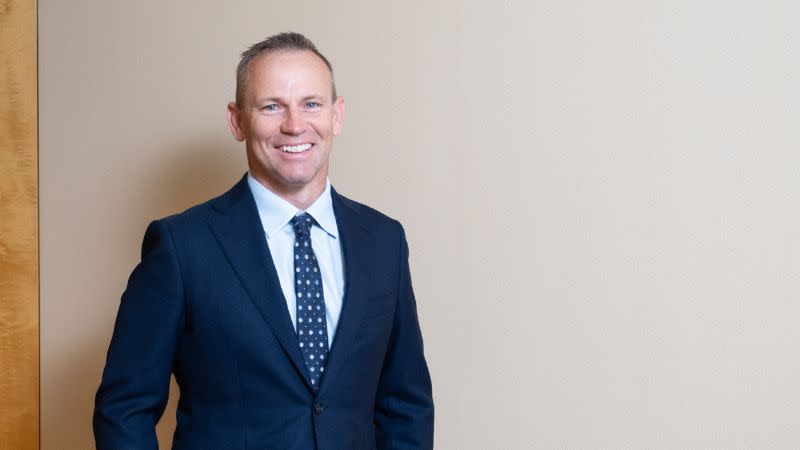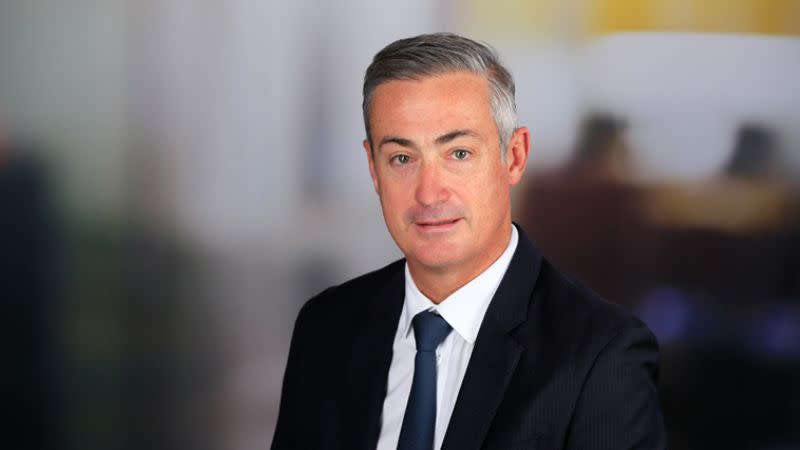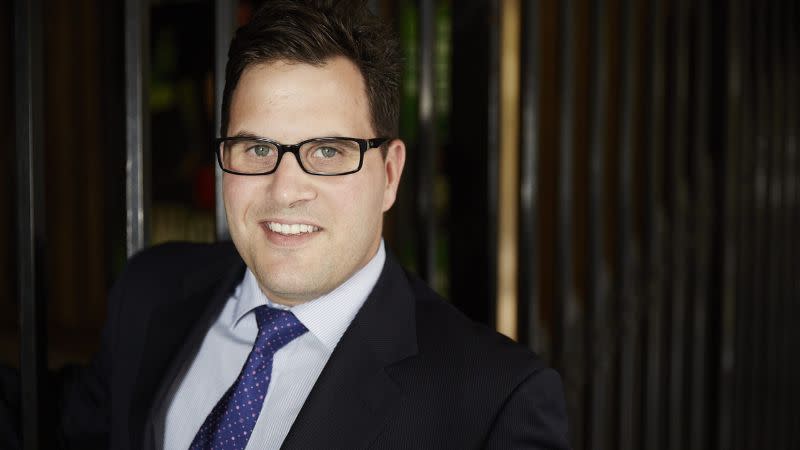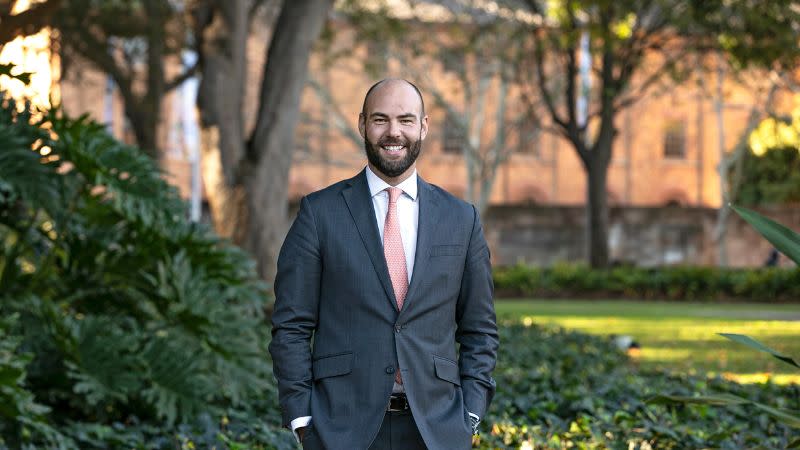2024 Vision: Commercial

It has been a year of mixed fortunes for the commercial sector—office has done it tough while industrial continues to sky rocket.
So what’s ahead?
According to the experts we spoke to, interest rates and major hold ups impacting the delivery of projects from retail to office to industrial will be the biggest issues facing the commercial sectors next year. Here’s what they said.
David Warneford
Country head, Australia and New Zealand
Hines

“In the office sector, we’re seeing a strong pivot towards sustainability, as well as towards core central locations, among today’s tenants—both are expected to underpin growth for the prime end of the office market in Australia.
“Demand is there, and we see good locations and premium green buildings leasing. That’s because these magnet buildings are employee-centric, sustainability-driven, well-located, and technologically efficient. They’re more than just office buildings. They’re places for building culture, collaboration, and community.
“Tenants are now really thinking about real estate as a strategic asset to help get their employees back in the office.
“We’re also expecting some shifts in the future supply dynamics of office, with supply likely trending down. Forward-looking tenants know this. They’ll be looking and planning ahead, and they’ll start leasing up good locations and premium buildings, before there’s a supply squeeze.”
Nicky Drobis
Partner and Head of Design
Fender Katsalidis

“Looking back at 2023, the key lesson for Australia's commercial sector is crystal clear: sustainability in design and development, spurred by a renewed focus on ESG goals, is non-negotiable. Experience-led workplaces is another focus alongside this, and we’re beginning to see this urgency for property owners to create opportunities and alignment for ageing assets to connect and provide for the users of these spaces.
“Looking ahead at 2024, the profound shift in societal values marks a departure from what was previously accepted as the norm. To find and retain talent, and to grow, businesses must meaningfully align themselves and prioritise these evolving cultural values. Those are around ensuring more sustainable and equitable future for our communities.
“Capitalising on these opportunities will require more companies to lead the charge in adopting values-based practices, ultimately reshaping the commercial landscape in the process and sustaining a deeper connection between people, the environment, and our cities.”
David Hall
Head of industrial and logistics, brokerage, ANZ
Cushman & Wakefield

“The biggest challenge for the industrial and logistics sector will be increased cost of debt which has underpinned volatility in the debt market.
“This has created a price discovery phase and there remains a gap between vendor and buyer expectations. A lack of volumes in 2023 has also elongated the price discovery phase. To overcome this, the gap needs to be narrowed which will come from a reset of book values.
“Book values will soften further in the December valuation cycle which will help bridge the gap.
“The planning process in most states is still the major hurdle for supply. Occupier demand remains strong, however, delays in supply have prohibited tenant movements to a large degree. The challenge stems from a lack of resources in most planning departments so this will need to be addressed to overcome this challenge.
“2024 will represent a pivotal year for the sector as there remains an unprecedented level of capital looking to gain entry or increase their exposure to the sector in Australia and we need to be at the forefront of market movements.
“To overcome this, we have and will continue to invest heavily in resources which will enable us to capture real time intelligence through data collection, research and analytics.”
Andrew Deveson
Director
Kapitol Group

“We assumed that inflation and supply chain problems would be more of a quick blip, we’ve been surprised by how long it’s all taken to stabilise. The prices haven't returned to pre-inflation pricing, but in a Victorian context, it’s certainly a lot more stable, and seemingly predictable.
“The new challenge of 2023 and I suspect of 2024 is, even though our price is more predictable for us, there are going to be ongoing challenges with making projects viable because of high construction costs and high interest rates.
“Feasibility is really hard—we’re doing way more work than we ever did, trying to make projects stack up and working a lot more closely with our clients. There’s so much more work to actually get a job started than we would have ever dreamed of.
“I think the biggest challenge now is getting projects to stack up. In-built inflation combined with interest rates, is making the lending and borrowing equation harder for developers to sell their product and to fund it. It’s a much tougher environment to get projects to stack up now. I think what we're going to see is a lot of hard work making things stack up.
Paul Craig
Chief executive officer
Savills Australia & New Zealand

“The Australian hotel sector is one to watch in 2024. We expect national occupancy recovery to continue fuelling the resurgence of the market. ADR is now well above pre-Covid levels and up by 32 per cent on average.
“Meanwhile RevPAR levels have stabilised across all cities with Brisbane, Gold Coast and Darwin reflecting the highest RevPAR growth.
“We expect investors will largely be driven by three strategies in 2024—value-add and repositioning strategies, core and core plus income driven approaches and also opportunistic ways to unlock value.
“We have already seen strong appetite for high-return strategies, with 25 per cent of institutional investors interviewed in the Hodes Weill & Associates—2023 Institutional Real Estate Allocations Monitor indicating they expect to invest in both opportunistic and value-add strategies, compared to 10 per cent planning to invest in core and core plus.
“Australia remains a favoured investment location for offshore investors, given our relative economic resilience. Sydney was recently ranked as investors second choice for investment globally. We have spoken to offshore investors who indicate greater comfort around deployment in 2024 in view of a potential peak interest rate environment and strengthening macro fundamentals.”
Malcom Tyson
Chief executive officer
Colliers Australia

“Throughout 2023 it was apparent that higher returns favoured the agile, as opposed to those who advocated that a return to normal was inevitable.
“Premium office rents and investor appetite will continue to elevate this asset class above the rest of the sector, with the yield spread between Premium and A-grade assets set to expand.
“Similarly, the spread between Premium and B-grade office asset yields is likely to expand, as appropriate risk and costs are priced back into purchasing decisions.
“[However] demand will outpace market supply of Australian retail centres, which saw strong sales performance incur positive rental growth across all retail assets over the third quarter 2023 and an average occupancy rate of 99 per cent nationally.
“Existing retail assets will reap the benefits of an undersupply of 2.2 million square metres of floorspace nationally by 2032, potentially absorbing an additional $20.5 billion in sales by today’s market metrics.”
Daniel Cullinane
National investment sales head
Cushman & Wakefield

“The biggest challenge for the industry in the year ahead is going to be the ability to manage the repricing of assets.
"We are seeing yields rise across multiple asset classes which is directly resultant of the increase to the cost of debt applicable to complete a transaction. Despite certain headwinds in this regard, the demand from investors looking to secure income derived from national tenants on long dated leases is still elevated.
“Cushman & Wakefield’s National Investment Sales team focus on childcare, fast food, medical, retail and service station assets that have long dated leases to national tenants, so we are continuing to experience heightened demand from investors who are seeking to secure alternate or additional income streams.
"While there has been yield and pricing pressures following increases to the cost of debt, I believe that we are now very close to the top of the interest rate cycle which will allow for some price stabilisation and the ability for us to manage the repricing of assets, which has been a sizeable adjustment in some asset classes.”
Tim Phillips
Creative and Managing Director
Tilt Industrial Design

"This evolving landscape underscores the shift in priorities within the commercial sector. Beyond the typical needs of functionality, there is a growing recognition that the success of commercial projects hinges on the ability to offer a unique and appealing proposition to potential tenants.
“Product differentiation is critical, particularly in the Industrial Sector where competition for marque tenants is strong. Industrial Designers are fast becoming the must-have consultant in the project team for developers and architects when considering how to improve aesthetics, amenity and user experience.
In the year ahead, the commercial industry will need to navigate this challenge by fostering even closer collaboration between developers, architects, and Industrial Designers. The integration of design thinking into the early stages of project development will be crucial in ensuring that the industrial spaces not only meet but surpass the evolving expectations of tenants and unlock further value for asset owners. "
Paul Jones
Managing director
Jones Real Estate

“We have navigated a period of uncertainty with rising interest rates. In my opinion, the market is now offering some stability, however uncertainty will linger for some groups—but present as an opportunity for buyers who are optimistic, or ‘glass half full’.
“The private market in particular has the ability to take advantage of current and projected buying conditions.
“Private capital entities [provide the biggest opportunity in the year ahead] they have the ability to beat the institutions who have higher hurdles.”
Mark Wizel
Managing director
Wizel Property Group

“Large healthcare and large logistics are likely to be the big winners for 2024. All other asset classes will be dealing with challenges either on the revenue or cost side.
“The biggest challenge will be achieving acceptable returns for active credit and equity with the competing interest from asset classes outside of commercial and residential property looking far more attractive on a risk adjusted basis. I believe the industry is also likely to be challenged to retain the staffing levels currently seen due to a major slow down (which has been prevalent in 2023) continuing through to at least mid-2025.
“The biggest opportunity for our organisation is the same as the biggest challenge—clarity and focus. We know what we need to do, we understand where it is likely that value investing will occur, we need to show poise and patience, and continue to talk to key drivers within each of the strategic pillars that are driving our business on a daily basis—deal flow, occupiers, and capital.”
Warren Ebert,
founder
Sentinel Property Group

“Different parts of the industry have different challenges. The high-rise unit area is coming to a standstill, construction costs are through the roof, and unions are out of control.
“In Sentinel’s area of funds management, the most difficult part in raising equity. Talking to commercial agents, most deals are falling over. We raised over $50 million equity for a Melbourne site and will settle another office asset in Mackay.
“We will see the best opportunities for over a decade as far as finding real value. Most people tend to run with the herd and buy when everyone else does. In order to capitalise you need to have the knowledge, ability and guts to have a real go. Very few will do this. Unfortunately, too many funds were buying at the wrong time, consequently they will now be selling at the wrong time.”
David Scalzo
Managing director
Perri Projects

“Planning and service authorities and the almost unbelievable bureaucracy a project is put through in the application stages [are some of the biggest challenges].
“Even when planning schemes and policies are well enshrined and documented a project can go through many months of “referral” and consultation. A better focus on the core goal of approvals to meet demand, and more accountability on time and outcomes for decisions through council or VCAT is needed.
“We are focused on building spaces for people working and living in the new frontier of industry, economy and community, particularly, health, medical, life science, and digital/tech real estate spaces.
“Keeping our projects on time and on budget through the planning and delivery phases [has been a challenge]. We have restructured some of our approach to projects and procurement and are spending much more time working with subcontractors or suppliers directly to ensure we have what we need during delivery when we need.
“I would like to think a fresh approach to engagement with industry could help achieve a better balance than the recent focus of punitive tax measures or demand side stimulation.”
Peter Vines
Managing director
Ray White Commercial Western Sydney

“This year has been a unique year for the commercial property market, all asset classes have encountered difficulties, however overarching has been the dramatic increase in the cost of finance impacting the attractiveness of assets at their current value and yield return.
“Most asset types have seen capital depreciation however industrial and tourism assets have overall experienced positive capital returns.
“In 2024, the positive industrial landscape will remain given the fundamental lack of zoned, serviced, industrial land and continued requirement to occupy stock.
“While yields need to move upward in response to the rising cost of finance, and tenant demand will soften this year, rental growth will continue albeit at a lesser rate in 2024.”
Matt Perrott
Founder and chief executive
BuildPass

“Labour shortages will continue to create headaches for the residential and building sector more broadly.
“From social housing to public amenity works, it seems everyone wants more infrastructure right now, but we can’t just turn on building more houses. So, the simple question is how can we build more, with less labour?
“For our business, one big opportunity we’re keen to investigate is creating a better source of truth for construction timelines that can be utilised by the industry.
“From a site operations standpoint, this would enable better visibility over certain tasks to mitigate delays, as well as clearly define responsibilities for all stakeholders, whether they are the principal contractor, a subbie or the client.”














